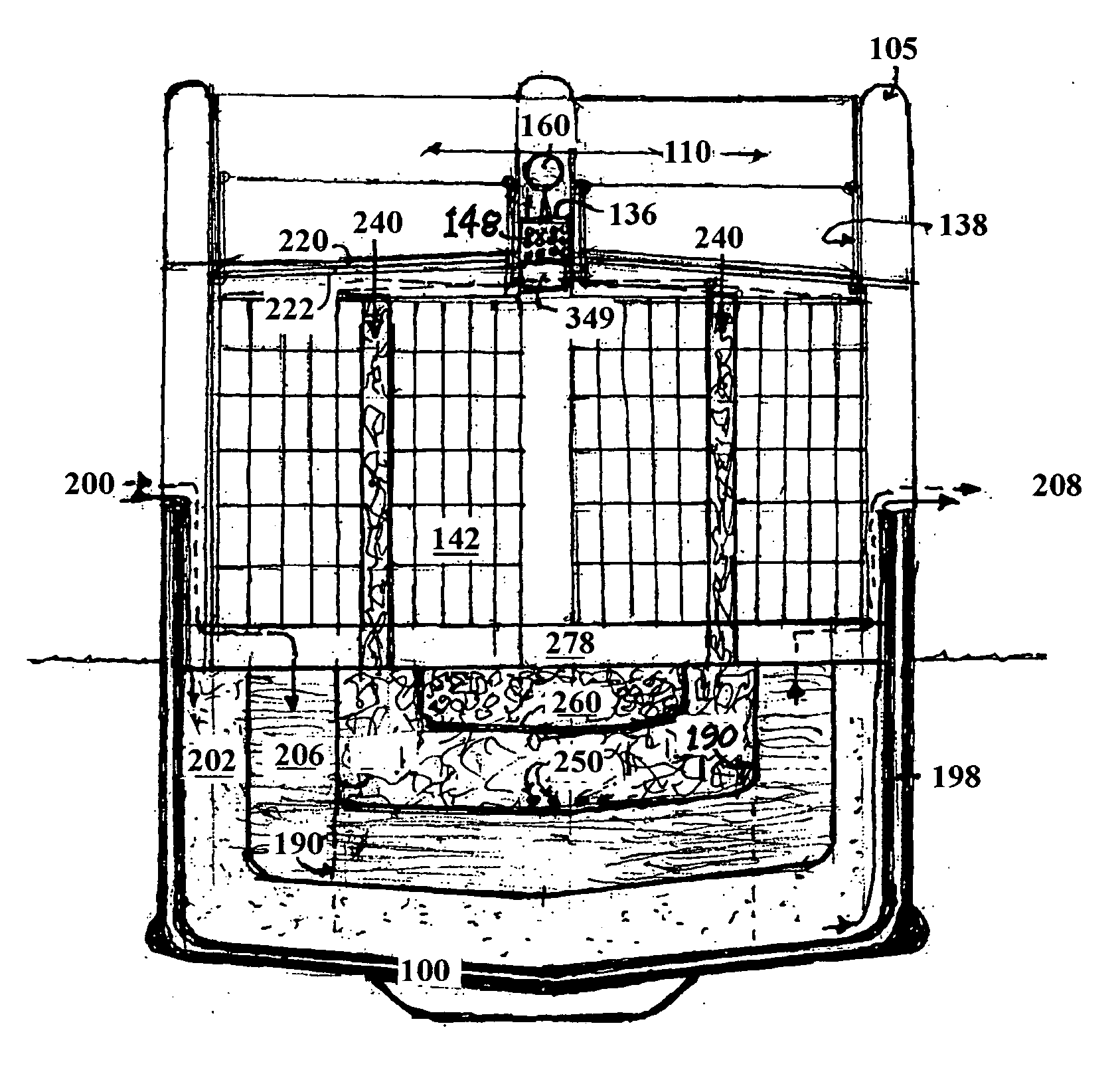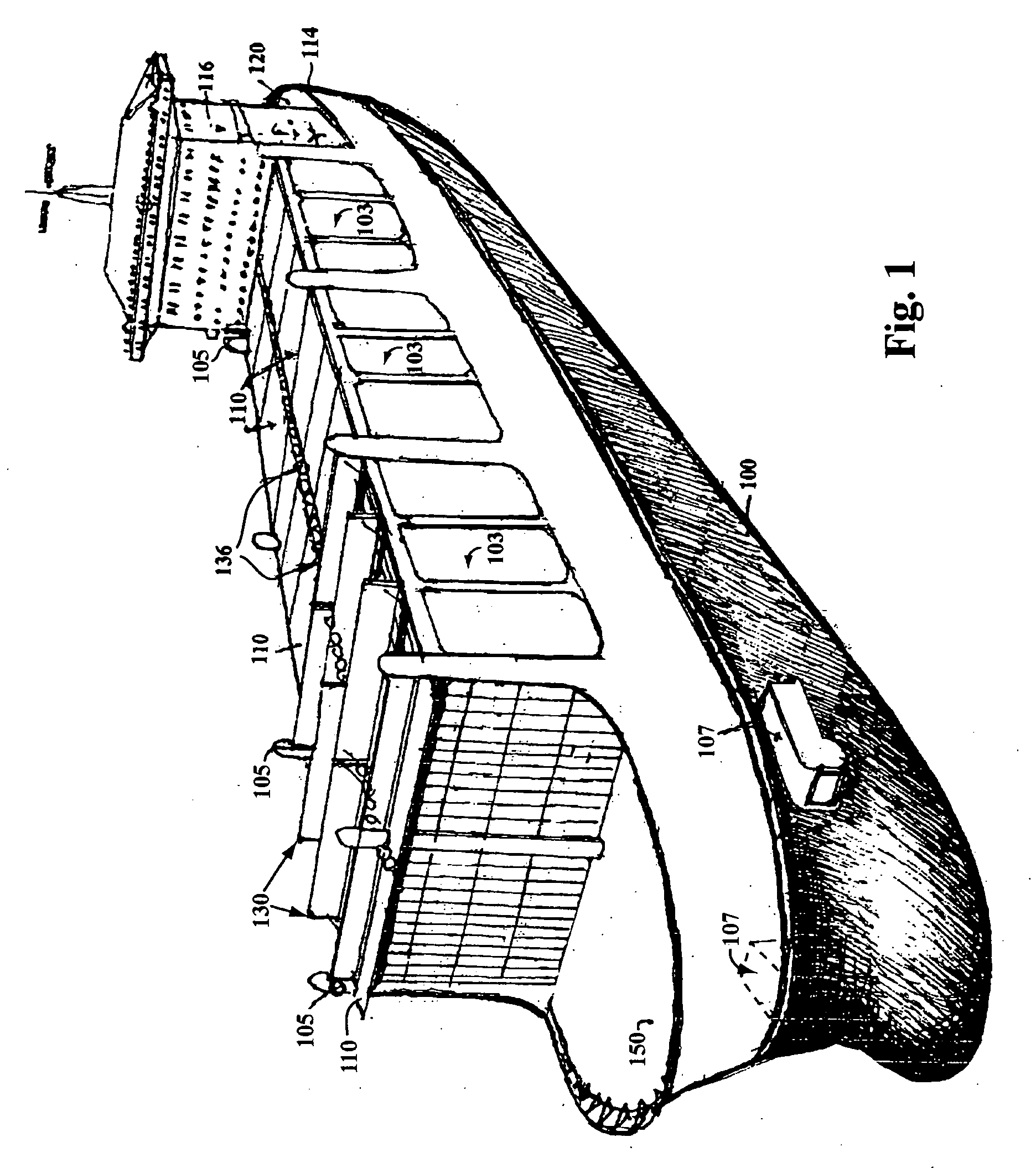Process and system for converting biomass materials into energy to power marine vessels
a technology of biomass materials and renewable energy, applied in the field of process and system for converting biomass materials into renewable energy to power large marine vessels, can solve the problems of affecting the world economy, major sources of pollution and environmental harm, and increasing natural resources dwindling,
- Summary
- Abstract
- Description
- Claims
- Application Information
AI Technical Summary
Benefits of technology
Problems solved by technology
Method used
Image
Examples
Embodiment Construction
[0026] In a preferred embodiment of the process and system of the present invention described in detail below, existing super tankers or other large marine vessels, e.g. super cargo ships, super oil tankers, aircraft carriers, and tourist ships, normally fueled by oil having a standard length of over 1,200 feet, are re-configured as follows: (1) to accept carbonaceous waste at a port side facility; (2) to convert the waste in an on-board gasification unit to synthesis gas to provide fuel to power the ships; (3) to utilize the sun in an on-board solar energy power system; (4) to produce a range of products from the waste while sailing to another port to deliver products and pick up new waste; (5) to harvest sea biomass while the ships are enroute between ports to increase the efficiency and economic improvement of the overall operation; (6) and to avoid problematic environmental releases of either liquids to the sea or greenhouse gases to the atmosphere.
[0027] A proper balance is ma...
PUM
| Property | Measurement | Unit |
|---|---|---|
| temperatures | aaaaa | aaaaa |
| length | aaaaa | aaaaa |
| width | aaaaa | aaaaa |
Abstract
Description
Claims
Application Information
 Login to View More
Login to View More - R&D
- Intellectual Property
- Life Sciences
- Materials
- Tech Scout
- Unparalleled Data Quality
- Higher Quality Content
- 60% Fewer Hallucinations
Browse by: Latest US Patents, China's latest patents, Technical Efficacy Thesaurus, Application Domain, Technology Topic, Popular Technical Reports.
© 2025 PatSnap. All rights reserved.Legal|Privacy policy|Modern Slavery Act Transparency Statement|Sitemap|About US| Contact US: help@patsnap.com



